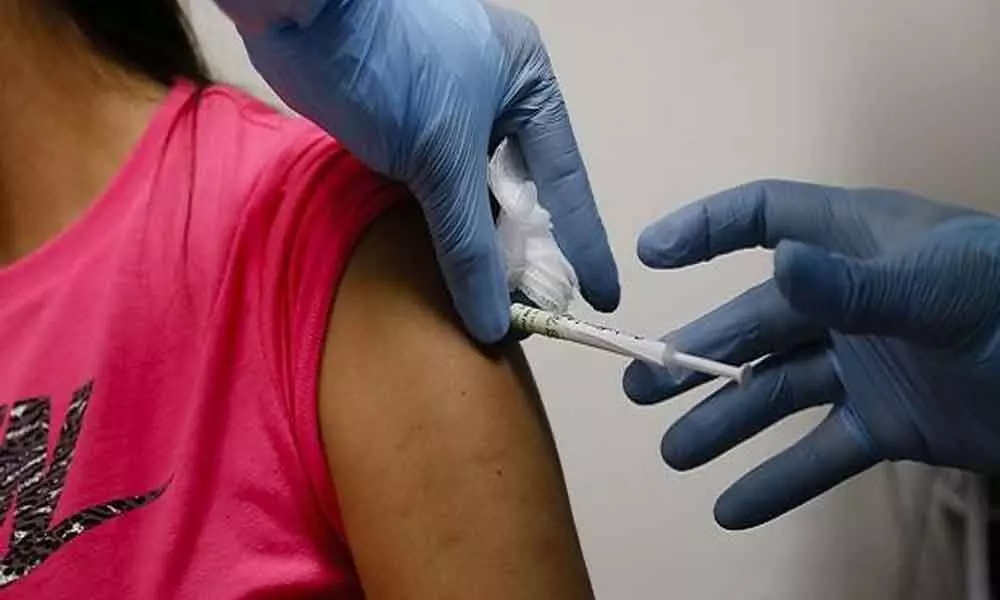Vax costs a big drain on State budgets in India
States may need to borrow more at a time when yields rising. Selling government assets is one way to reduce debt burden
image for illustrative purpose

The world's worst coronavirus outbreak is set to stretch the already strained budgets of Indian states, making it more costly to borrow just when they need the money to cushion their economies.
India's 28 States will have to foot about $5 billion or more in vaccination costs after Prime Minister Narendra Modi's federal government suddenly made them responsible for inoculating most adults from May 1. Since they hadn't budgeted for the jabs or steps to tackle a second wave, their options to meet the additional expense are limited to cutting capital expenditures, selling public assets and boosting borrowing.
A simple calculation shows it will cost states Rs 35,400 crore ($4.8 billion) to give two vaccine shots to about 590 million Indians in the 18-to-44 age group, at a combined cost of 600 rupees per person. If vaccinations are extended to those under 18 years old, the expense could rise to 0.25 per cent of gross domestic product, or about $7 billion, according to Emkay Global Financial Services Ltd economist Madhavi Arora.
The additional burden couldn't have come at a worse time for States, which are facing higher yields on market borrowings this year amid the threat of widening fiscal deficits.
Failure by India's provinces to raise and spend enough money risks holding back the recovery from a rare recession last year. That's because States account for 60 per cent of total government spending on asset creation and infrastructure building, which drive jobs creation and consumption.
In addition, States are having difficulty attracting foreign investors despite paying yields that are typically higher than those on the central government debt. Global funds have used only 1.2 per cent of the Rs 67,600 crore investment limit available to them in notes issued by States as of May 10, down from 4.8 per cent two years ago, data from the Clearing Corp. of India Ltd. show.
Sell assets
"Finances are bound to be affected," said TS Singh Deo, Health and Commercial Tax Minister, Chhattisgarh. "The axe will certainly fall on capital expenditure."
Modi's government has encouraged States to sell assets to fund spending plans in the current year. That's one way to bring down the debt burden, said Palanivel Thiaga Rajan, an ex-Wall Street banker and newly appointed Finance Minister of Tamil Nadu.
"Everything is on the table," he said. "We will cut back on a bunch of spending that we don't think is essential during this time. We will try to raise new sources of funds. We will try to do some restructuring of the debt. We will look at asset sales."
The pandemic has changed States' budgets significantly, according to the central bank. The average gross deficit for States that presented their budgets before Covid was 2.4 per cent of output, while after the lockdown it stood at 4.6 per cent in the year ended in March, the Reserve Bank of India said.
Uttar Pradesh, India's most populous State, saw the gap widen to 4.17 per cent of the State's GDP in the year ended March 31, compared to the prescribed limit of 3 per cent. Bihar, among the nation's most impoverished States, estimated the gap at almost 7 per cent.
They may miss their goal of narrowing the budget deficit this year. Although there's no national lockdown this time to stem the deadly second wave of the pandemic, several States have imposed local movement curbs that are hurting economic activity and revenue collection. That's nudging many economists to cut their double-digit growth forecasts for the current fiscal year.
What Bloomberg Economics Says...
Daily activity index for India has steadily declined since the last week of March, which broadly coincides with the rise in the country's lockdown stringency levels
-Abhishek Gupta, India economist
There's "renewed uncertainty regarding the near-term economic outlook," said economists led by Aditi Nayar at ICRA Ltd, the local rating arm of Moody's Investors Service. That "may modestly constrain the indirect tax collections of those particular states."
To bridge the gap, Rajasthan is planning to sell or lease out unused properties. Telangana, is planning to sell land parcels to raise about Rs 14,500 crore, according to local media reports.
Still, there's no guarantee these deals will come through. Even the central government has failed to achieve divestment targets for the past two years after failing to sell flag carrier Air India Ltd and Bharat Petroleum Corp, a state-owned oil refiner. Those sales have been carried forward to the current year.
Punjab plans to cut capital spending and instead boost healthcare expenditure, its Finance Minister Manpreet Singh Badal said.
"States have to fend for themselves," he said. "Even though we increased our health budget by 18 per cent this year, I see my health budget going up further on account of this emergency. There is no other way."(Bloomberg)

